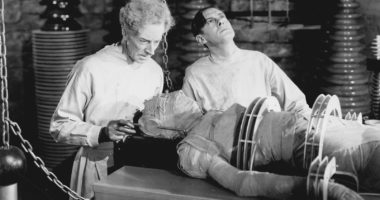
Rita Jolivet, 1915-1920 | Library of Congress | Public domain
The irruption of AI tools is triggering huge structural changes. It forces us to think about the relationship between humans and technology, the need for regulation, the changes to work and the implications for democracy and the information society. In this article, we look at some of the ideas brought up in the season of debates “The other AI revolutions”.
I
Whichever way you look at it, the explosion of generative AI is a revolution. As well as their scientific or technological facets, revolutions are always cultural, in the two (complementary) senses of the word “culture”: that which relates to “cultivation” (structural), and that related to the body of knowledge, rules, expressions, symbols and ideas (which is always reflected in narratives, the arts, academic disciplines and all levels of representation).
In “The other AI revolutions” season, we set out to analyse the cultural impact of the current changes that are driving deep learning neural networks and other AI systems. To do so, we brought together international specialists from various fields of knowledge, from philosophy and sociology to the arts and law.
In the calendar sense, a season is a period of time which comes to an end only to start over again. There is no doubt that AI is going to need this constant restarting. We cannot, and must not, stop thinking about it – artificial intelligence can only be processed through collective natural intelligence, through exchange and conversation.
II
“Human intelligence is artificial,” said Yuk Hui in the first session of the season, on how computer systems are revolutionising ideas. The Chinese-born philosopher, who belongs to the European academy and has published books such as Fragmentar el futuro (Caja Negra, 2020) and Recursivity and Contingency (Rowman & Littlefield Publishers, 2019), asserted that in order to understand technology, we must think seriously about biology, i.e. the area that connects the mechanism with the organism. And that we must defend diversity in three complementary spheres – technology, biology and the noosphere (at the planetary scale).
To this end, we must not forget that the concept of “human being” is a modern, and therefore a recent one – humanisation was a process of technological inventions, so it could be said that technology invented humanness (and that humanness is a constant reinvention).
It is clear that, in geopolitical terms, we are facing a global race guided by the decisions taken in Silicon Valley, and that China has joined the fray. While Yuk Hui has highlighted the need for a post-European philosophy, there is also a pressing need to imagine a post-Cupertino ideology. After all, as the thinker says, “the challenge of artificial intelligence is not about building a super intelligence, but rather to facilitate a noodiversity.”
III
In her presentation of the talk between Mercedes Bunz and Joan Fontcuberta on the cultural revolution inherent in AI, Alex Saum Pascual (professor at the University of Berkeley and poet) pointed out that we must never fail to historicise. On this point, she mentioned Bunz’s book The Silent Revolution (Palgrave Pivot, 2013), which Bunz published in German back in 2012 and in which she predicted the enormous impact of digital media in the context of a society not of workers, but of experts. A year earlier, Joan Fontcuberta published the article “Por un manifiesto post-fotográfico” (For a post-photographic manifesto) in the cultural supplement of La Vanguardia, and in 2008 he directed the international meeting “Do Androids Dream of Cameras”, as he recalls in the first few pages of La furia de las imágenes (Galaxia Gutenberg, 2016). Both, therefore, have been thinking about the automation of the world and its cultures for over a decade.
Mercedes Bunz wondered where intelligence is at the moment, apart from in human brains and books. Asking whether machines will be creative is the wrong question, because human creativity has, in one way or another, always been intertwined with instruments, tools or artificial elements. The problem, at the present time, is that we no longer understand how this cooperation or hybridisation works. Machine learning no longer means just writing code, but introducing huge amounts of data so that the system learns by itself, with the resulting biases and uncertainties. This represents a change of perspective – the machine does not see what the camera sees. This new reality has not only artistic consequences, but also political ones. Which is why we need an open, transparent, public AI. And art can help in this respect – often what is tested in an art lab can be transferred to the user’s private reality or to a social cause. The mainstream cultural revolution is headed in a specific direction, but we must look for ways to redirect it.
For his part, Joan Fontcuberta, who defined himself as an “acrobat of the image guided by curiosity,” started from the idea that nowadays the image does not represent the world – it is the world. It shapes the new consciences, and our decisions. Fontcuberta talked about “Nemotipos”, his latest exhibition (in Murcia), which brings together two decades of work characterised by the production of images without a camera. In recent times he has been generating portraits of people who don’t exist, with more interest in error and imprecision than in mimetic precision, despite working with a supercomputer (from the Barcelona Supercomputing Centre). He has already started using the deep fake technique to generate hyper-realistic videos starring, for example, Donald Trump (with his face contorted into an orgasm), but without overdoing the quality, so that the spectator can clearly see the parody. While botanical illustration was a kind of proto-photography, photography in the last century and a half has been a proto-AI.
IV
In his introduction to the conversation with the American professor and author Frank Pasquale, who has just published his New Laws of Robotics in Spanish under the title Las nuevas leyes de la robótica (Galaxia Gutenberg), Xavier Nueno, also an author with a PhD from Harvard University, spoke of the two traditional narratives around robots and AI – as a divine gift and as a diabolical machine, while Pasquale, he said, is working on a third, alternative narrative, that of regulation.
The American professor took as his starting point a paradox: contrary to the expectations generated over recent decades, the impact of the explosion of AI (with the launch of ChatGPT) has been on creative work, rather than cleaning, security or other tedious tasks. In this new panorama, a case-by-case analysis is needed to answer the question of whether the automation of a specific task supplants the work of a human professional. In the field of translation, for example, the automatic subtitling on YouTube does not displace a professional. But in many other cases someone is being pushed out of a job.
If we broaden the focus to a general, epochal debate, we see that there are two fundamental tensions – between technocracy and populism, and between democracy and disruption. Some classical professions (teaching, medicine, law) are being subject to judgements that come from the spheres of economics and computer science (such as the continuous evaluation by the student, patient, client, user; the imposition of a maximum appointment time; or the constant calculation of return on investment). The logic of disruption proposes, and often imposes, an alternative system to the agreed one without previously having studied its consequences. The new channels work against the expert, against training, against autonomy and against the credit of professions. Which is why, says Pasquale, the future can only be unionised.
The automation of the public sphere, in which social media platforms and bots have taken over much of the traditional media space, with the consequent increase in misinformation, also calls for regulation. The automation of death, through drones and other robots, similarly requires new laws and conventions. It is of crucial importance to legislate the internet, and there must be transparency in the attribution of data and in the origin of technologies.
V
The series “The other AI revolutions” concluded with a conversation between the journalist and essayist Marta Peirano, author of El enemigo conoce el sistema (Debate), and the Italian philosopher Maurizio Ferraris, who has reflected on the profound changes being brought about by algorithms in his book Documanidad (Alianza).
Ferraris’ “new realism” (2010-2012) is a concept that predates Trump’s “alternative facts” (2016) (perhaps because Berlusconi was a precedent for this later populism). We are now in a new stage of post-truth with ChatGPT et al.
AI allows both the informative, personalised and dopaminic fragmentation of the narrative about what is real, as well as coordinated, ethical and transversal projects such as those of Forensic Architecture, said Peirano, who uses Big Data and machine learning to denounce the massacres being carried out by Israel in Gaza. Indeed, the Italian thinker asserted that the technologies of our time are both toxic and emancipatory, poison and medicine.
They feed on our documanity (“infinite production of documents” by everyone, as we have all become media, leaving digital traces of all our activity). In a media landscape with apocalyptic and dystopian overtones, Ferraris’ unusually optimistic perspective is worthy of note. In his latest book, he proposes the capitalisation of our data through humanistic platforms in order to implement a fair re-distribution of profit. Seeing that the Web is one of humanity’s great achievements, a massive bank of data and knowledge which does not value us “for our merits, but for our needs,” Ferraris has launched the experiment Webfare, which would be the evolution of welfare. With the collaboration of a bank in North-East Italy, the research has made it possible to calculate the capital represented by the social media presence of 1.5 million people. Is this the beginning of a utopia?
VI
While some of the most important intellectual figures of our time were talking in the CCCB’s hall and theatre, the large wall of the exhibition area was displaying the mural comic Synchronies, by the artist Roberto Massó. The work offers a piece of speculative fiction to imagine communication between humans and algorithms through the classical computing of the present and the quantum computing of the future. While in the first few vignettes we see zeros and ones, a modem or ADSL, the story progresses through the curvature of space and time and cubits, simulating the journey of information from the present to the future. And vice versa.
It is about creating a narrative of dialogue, of cooperation between people and machines, after too many dystopian novels, films and series. Its moral, if it has one, is that before such a conversation can really take place, we need to perfect the dialogue between ourselves. Between engineers, entrepreneurs, legislators, philosophers and humanists. For several weeks, on the stage of the CCCB, people from China, Berlin, London, the US, Italy and various parts of Spain came together to talk, together with hundreds of people in the audience from many different backgrounds, about a range of subjects including technodiversity, hacking, regulation and utopia. The conversation is an urgent and essential one, and we must continue to broaden it. Because the last few revolutions were televised, and the new ones are in danger of being automated. But will we allow it?




Leave a comment